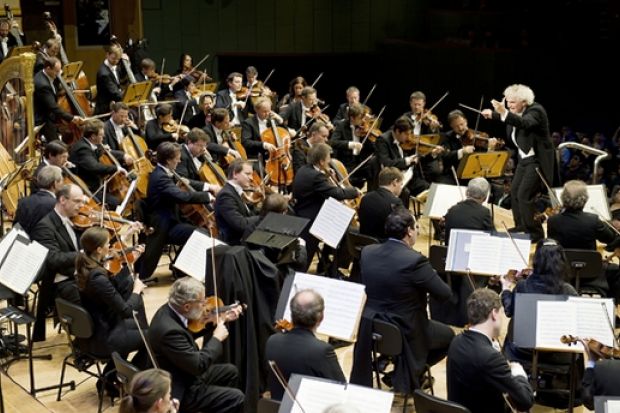Berliner Philharmoniker - A Musical Journey in 3D
Directed by Michael Beyer
Released in the UK on 9 May
Live music is the only true music; music mediated by technology is simply decline and fall, even corruption - so say music lovers and makers, from Toscanini to Edward Said. But it is not only Westerners who argue this way. Recently I was in Beijing, where a famed Chinese conductor denounced my declaration that mobile phones - there are more than 650 million in China - might play a role in connecting classical music with new and young audiences. The good-humoured denunciation inevitably mentioned Toscanini.
Berliner Philharmoniker - A Musical Journey in 3D, directed by Michael Beyer, is just the latest media attempt to persuade the live music purists that film can reproduce, even intensify, the live experience. The film features a Singapore concert of the Philharmoniker's performance of Mahler's First Symphony and Rachmaninov's Symphonic Dances. As befits a concert in 3D, violin bows seem at moments to pass in front of my cheek; at other times, I sit with the first violin watching Simon Rattle conduct. This is nothing if not an immersive experience - even if the wonderfully sympathetic camerawork that repositions the viewer next to the French horn or to thundering timpani seems to have no effect on how this particular viewer experiences the music, which is steadily from what seems like the middle of row F, the most expensive seats in the house.
There is great hope among the arts community that 3D will transform arts films; and only last week, Wim Wenders, who has just made a 3D film about the late Pina Bausch, the great German choreographer, said that it is in documentary, not feature film, that the possibilities of 3D can be most fruitfully explored and exploited.
Wenders may be right, but in one sense this film, Berliner Philharmoniker, belongs not to that niche "arts documentary" world but to a wider and more popular one, in search of the perfect immersive experience. Milestones along the way might include Disney's Epcot theme park, James Turrell's art installations and (rather than James Cameron's Avatar) Alfred Hitchcock's Psycho, the first film where the audience were not allowed to enter the auditorium after the film had started.
But it would be an error to see the importance of this Berliner film primarily in terms of its technological bravura, its immersiveness or even its ability to provide new positions from which to experience a concert. What matters about this film is that it is a sign of its cultural times: where cultural institutions are metamorphosing into brands and where global arts institutions find new alliances in Asia.
Increasingly, major arts institutions - or brands, as they sometimes prefer to be called - have begun to be broadcasters themselves. The directors of the Tate and the British Museum were reported as saying in a London School of Economics talk that they wanted their museums to be broadcasters. The Berliner Philharmoniker already has a Digital Concert Hall where for a relatively small outlay, viewers can watch up to 30 concerts each year of the orchestra in its Berlin home.
The new film simply seems an extension of the Digital Concert Hall. For a brand such as the Berliner, digital concerts and the film have two great advantages: as terrestrial broadcasters provide fewer and fewer arts programmes, a cultural institution like the Philharmoniker wants to take on this role itself. Equally important, such films are in effect "danger-free" for arts institutions. If 3D obliterates the physical distance between viewer and orchestra, critical distance is obliterated as well, as the viewer is invited to take a 3D trip of a lifetime. Experience is all (and Wenders' hagiographic portrait of Pina Bausch is subject to the same criticism).
But even more a sign of the times is the marriage of a global arts company such as the Philharmoniker with the Singapore Tourist Board, the film's joint investor, whose pay-off is a series of scenes shot across Singapore that are intercut with shots of the orchestra. European music and a great European brand help to sell a fascinating Asian city.
Given how music has been used and misused across history, it is hard to work up an indignant sweat about such an innocuous collaboration. But a sign of the times it is. As European economies continue in crisis, great Western cultural brands will go east in search of funding; and as Asian countries want to become more visible globally, they are happy to host - and help fund - major theatre companies or orchestras from around the world.
Go see Berliner Philharmoniker for the camerawork and music (although later Mahler would have been more challenging). But go to see it, above all, to see how the world is changing: how global arts brands are positioning themselves, and how a rising Asia incarnates itself in the most unlikely of forms.
Register to continue
Why register?
- Registration is free and only takes a moment
- Once registered, you can read 3 articles a month
- Sign up for our newsletter
Subscribe
Or subscribe for unlimited access to:
- Unlimited access to news, views, insights & reviews
- Digital editions
- Digital access to THE’s university and college rankings analysis
Already registered or a current subscriber? Login
